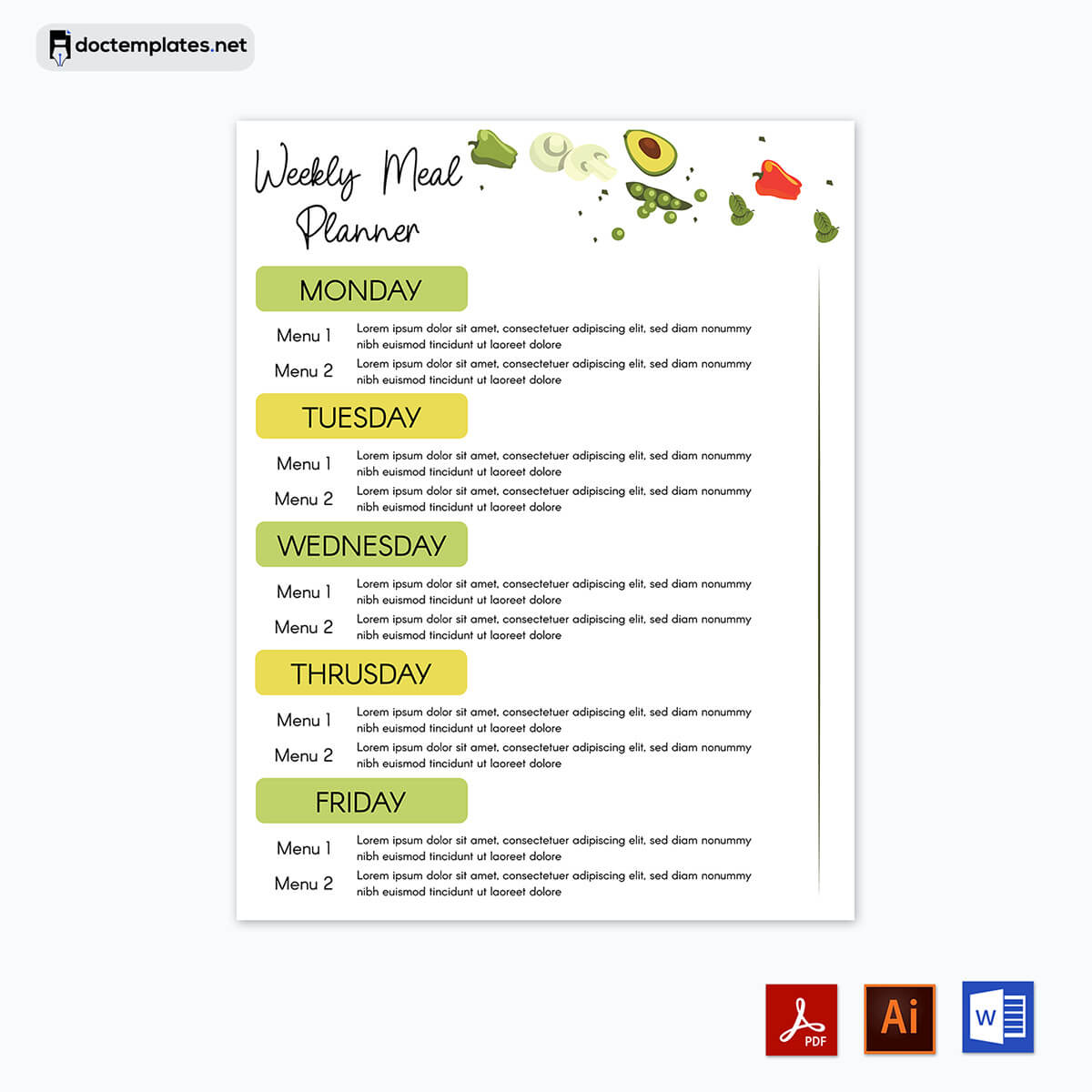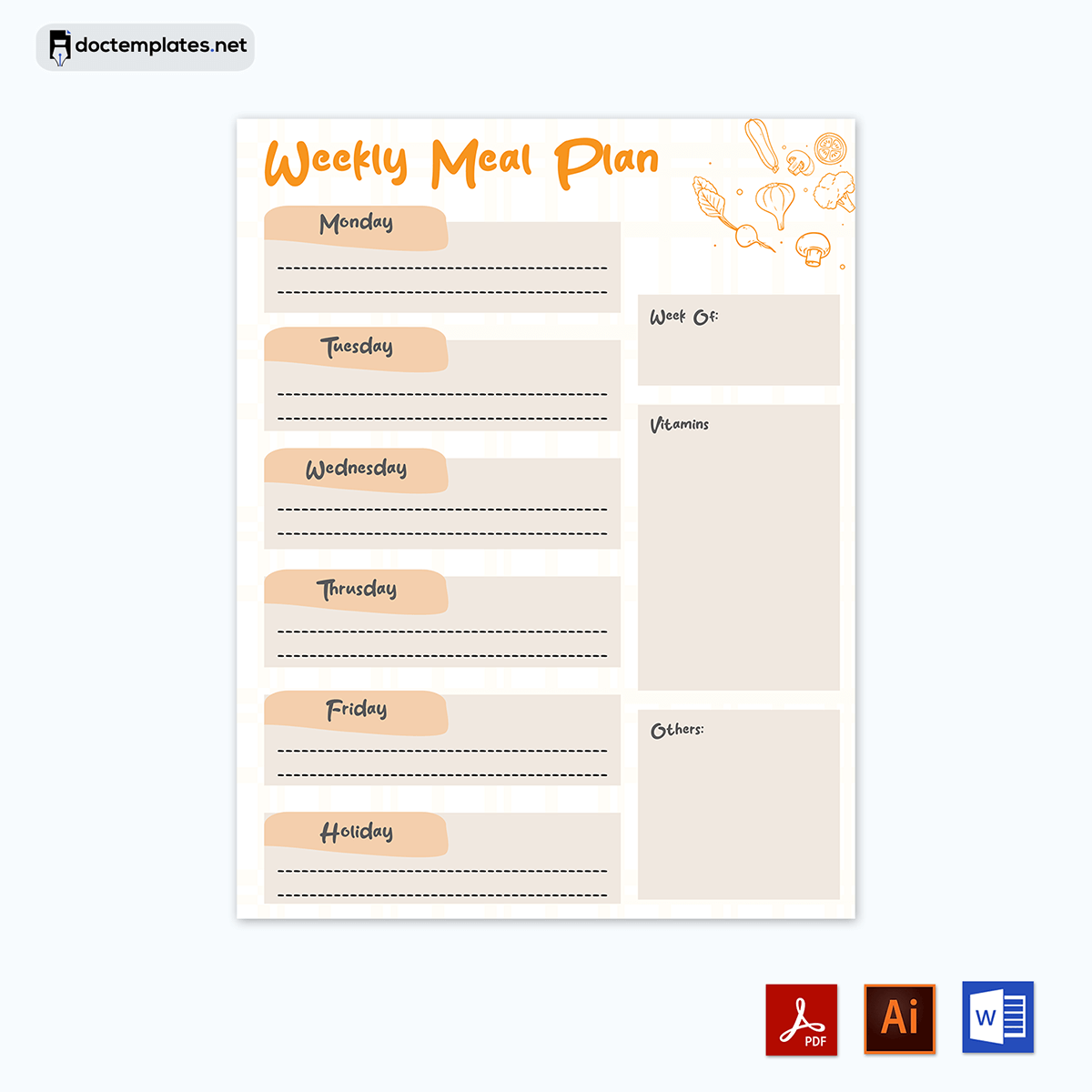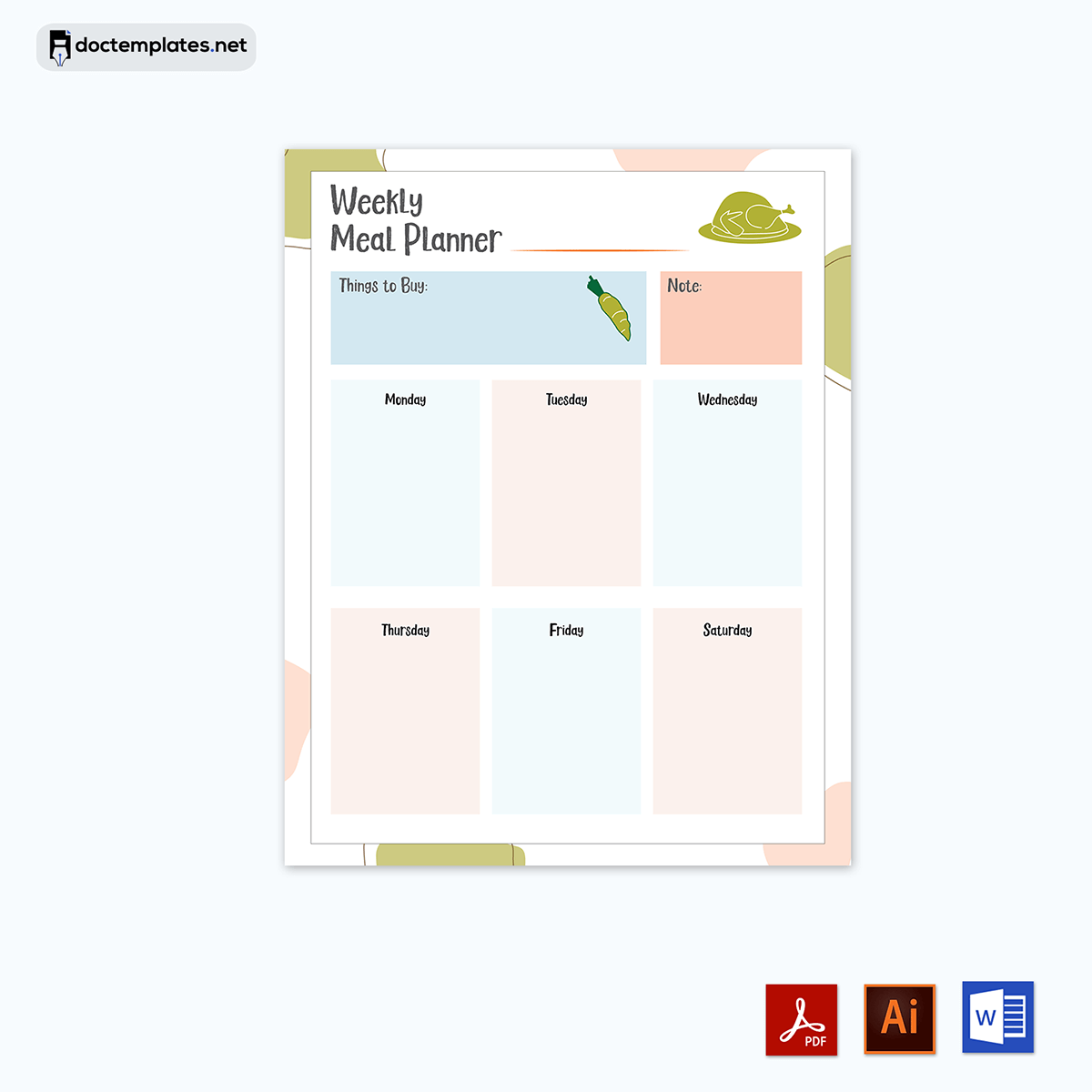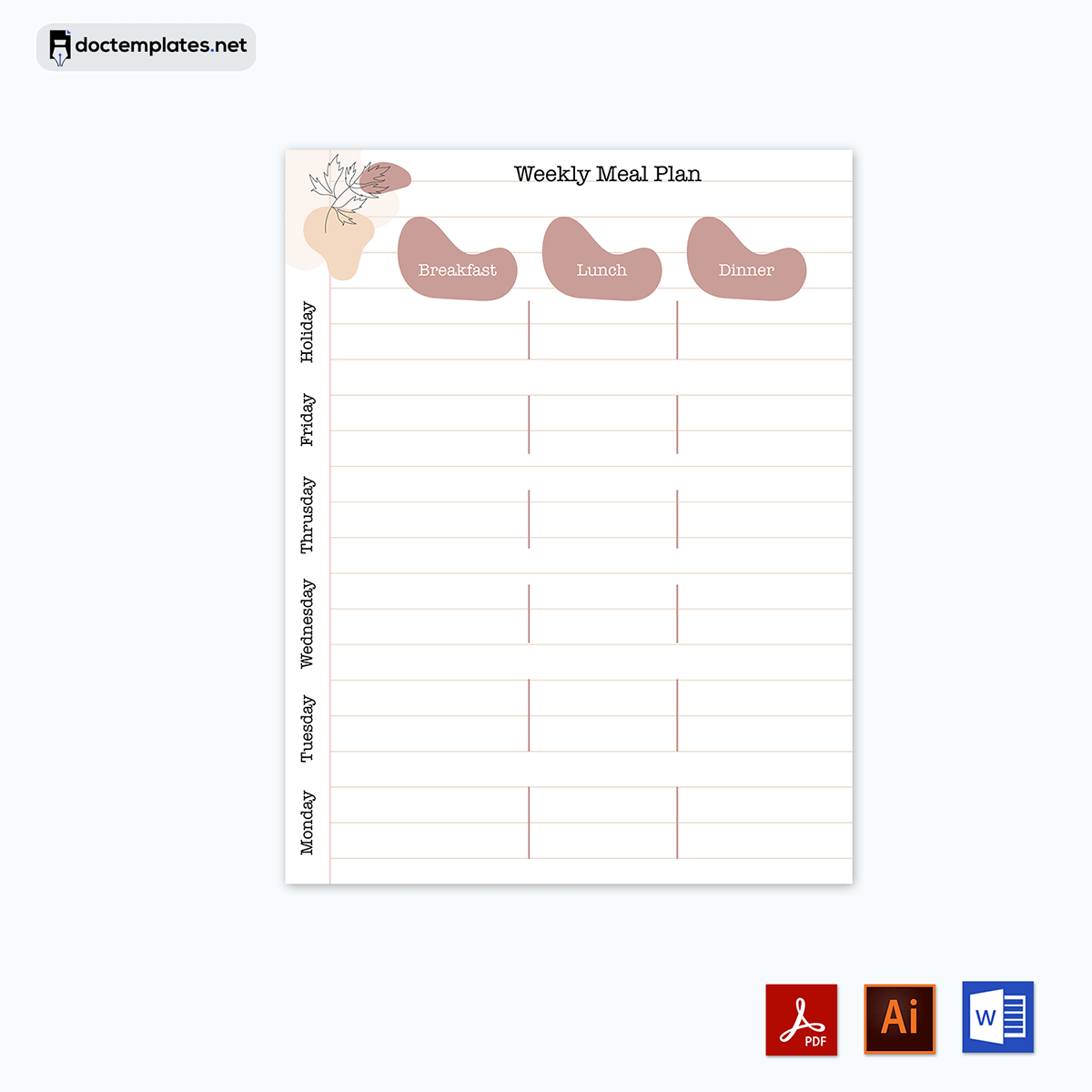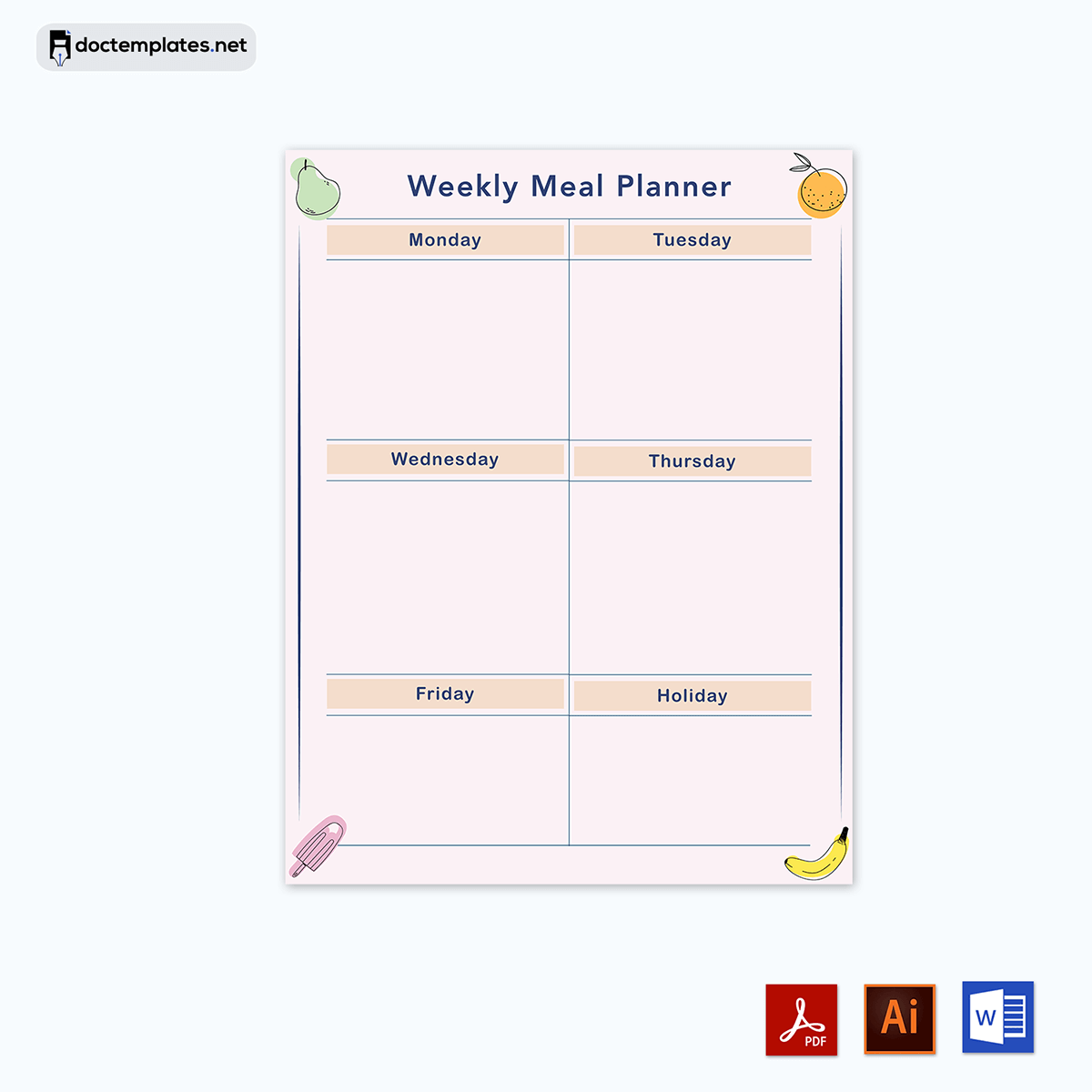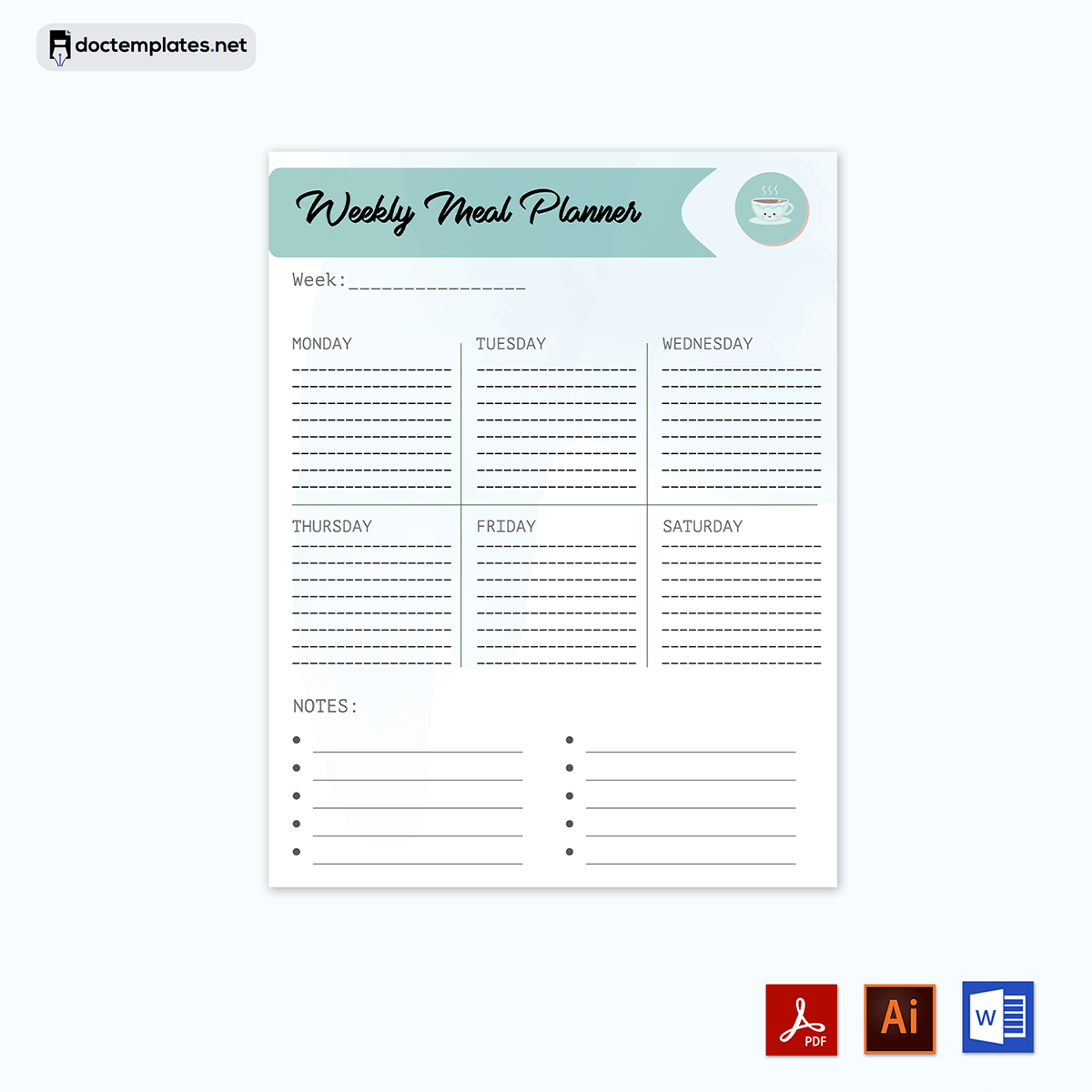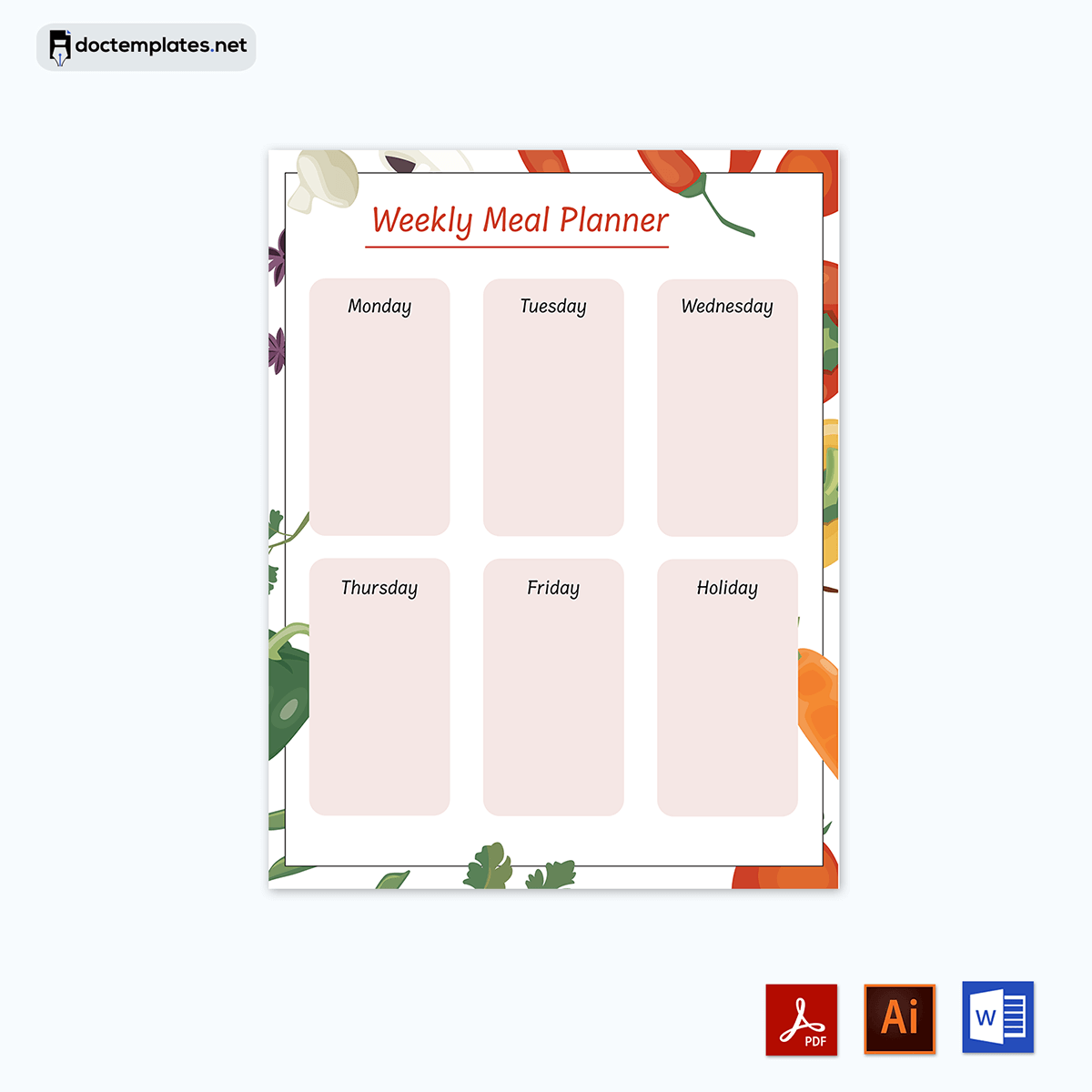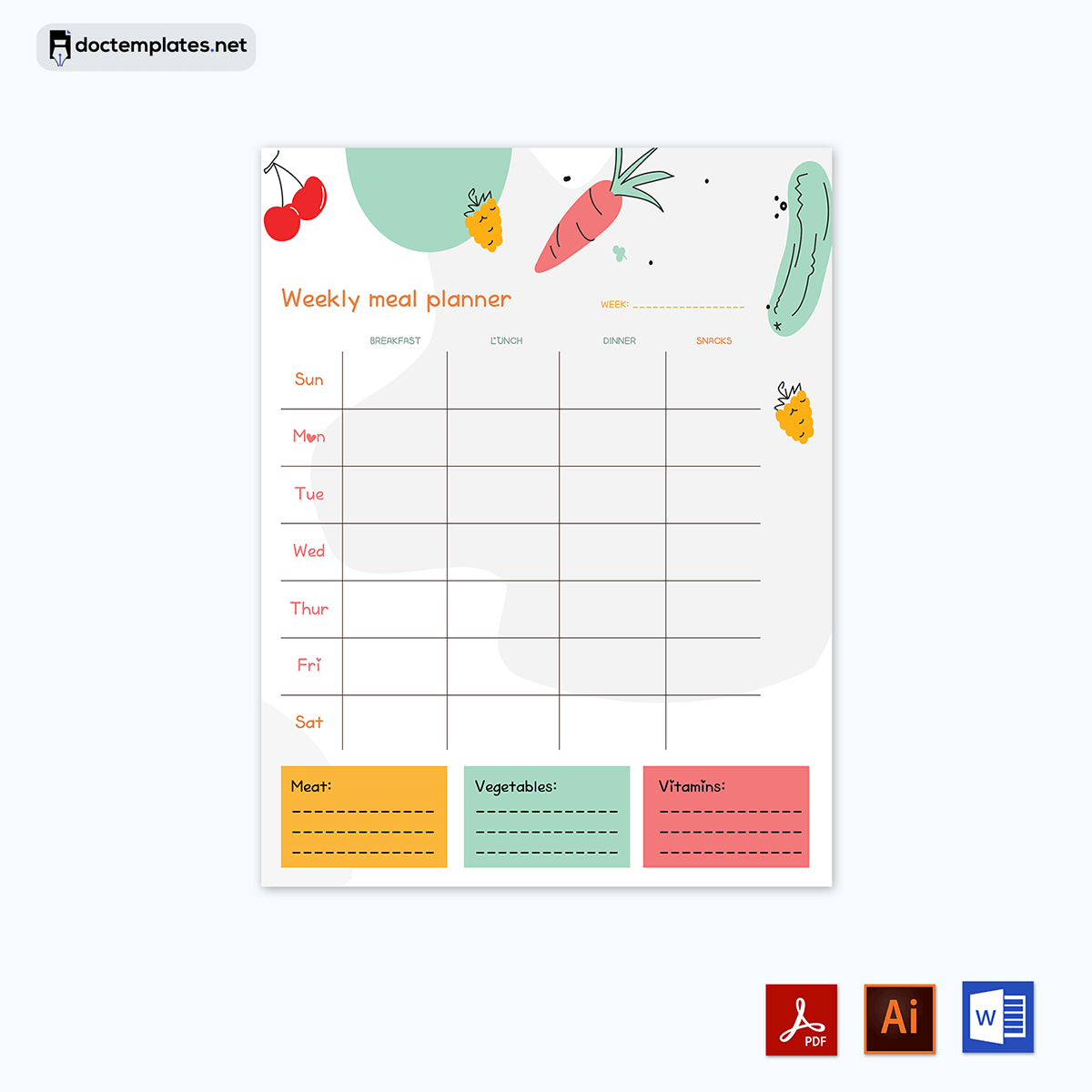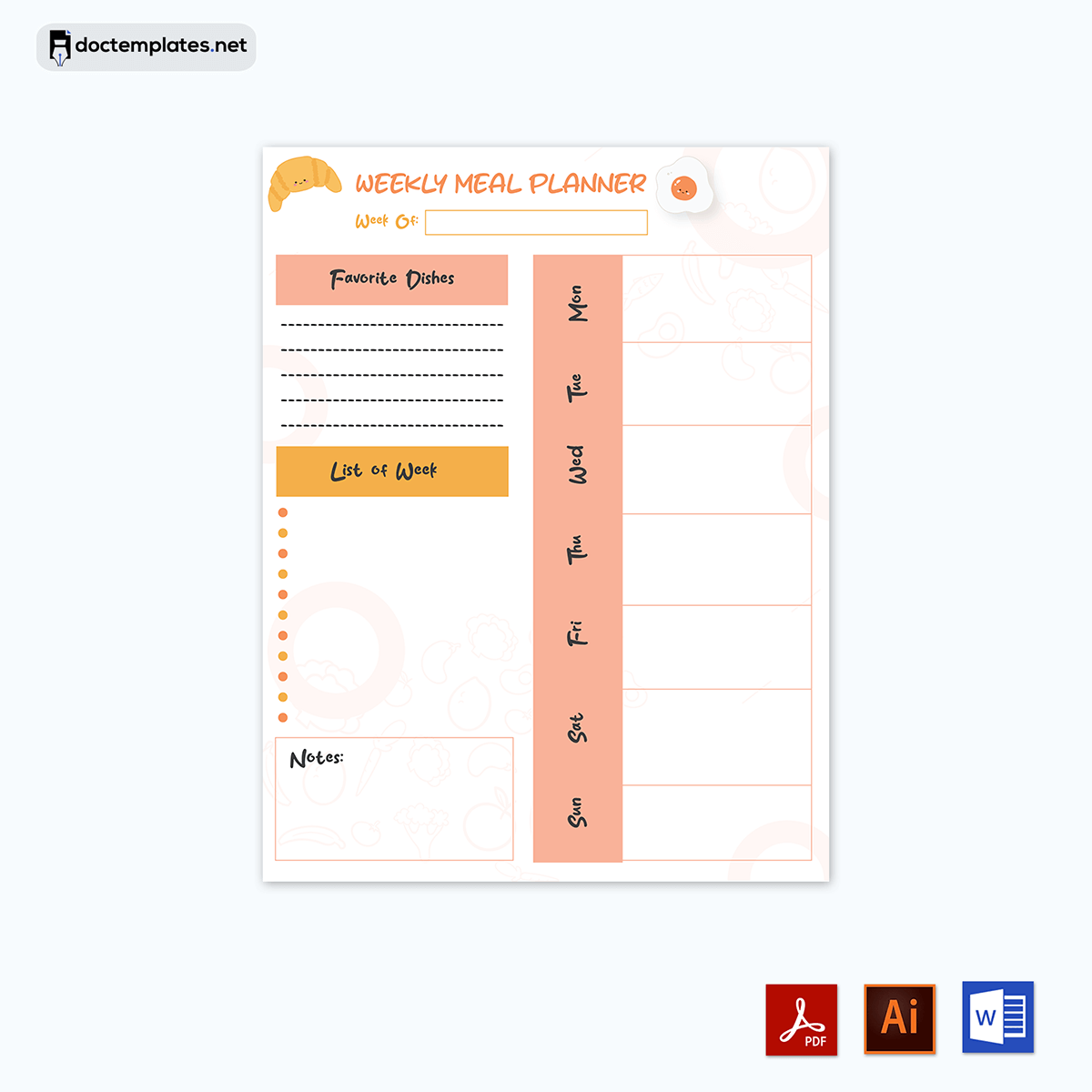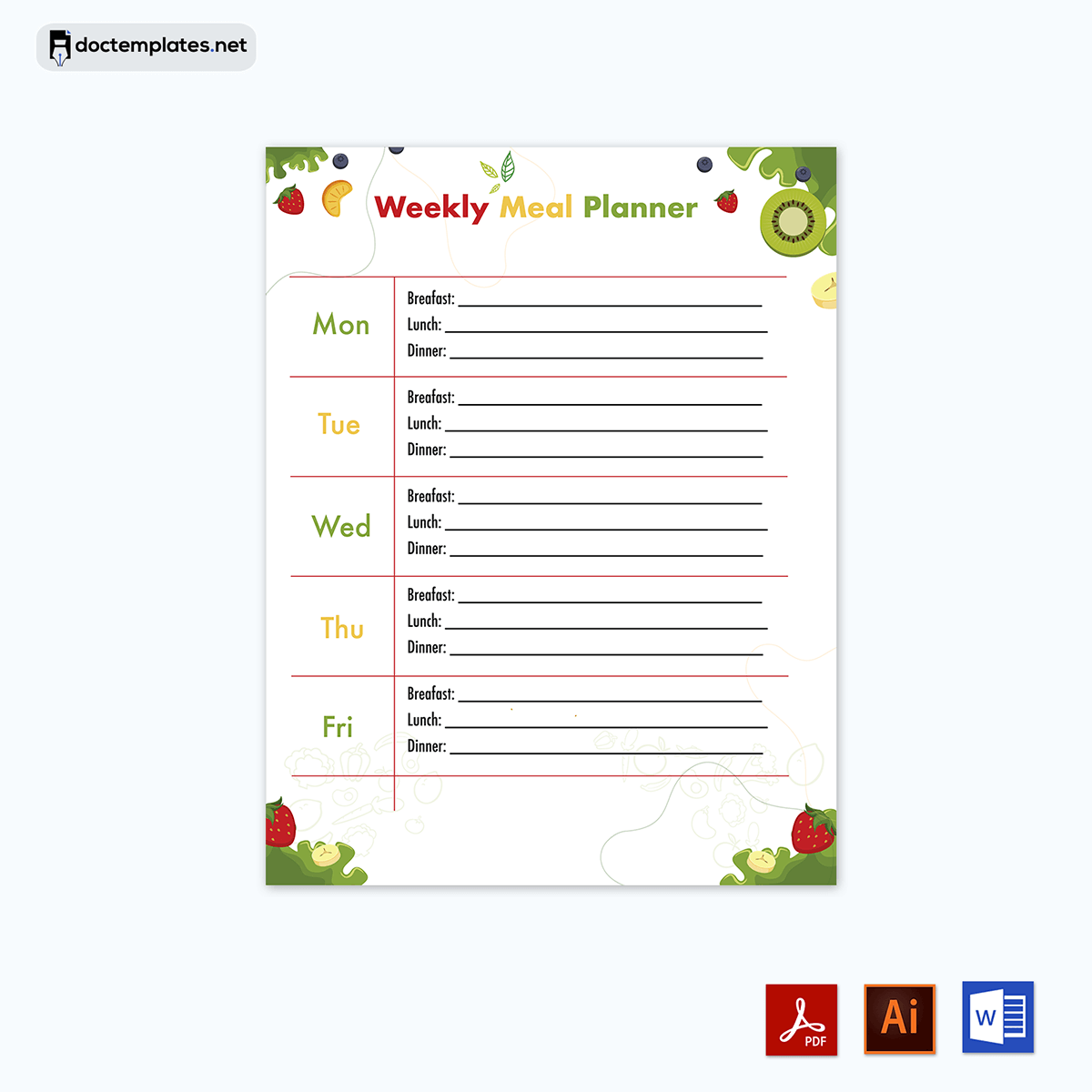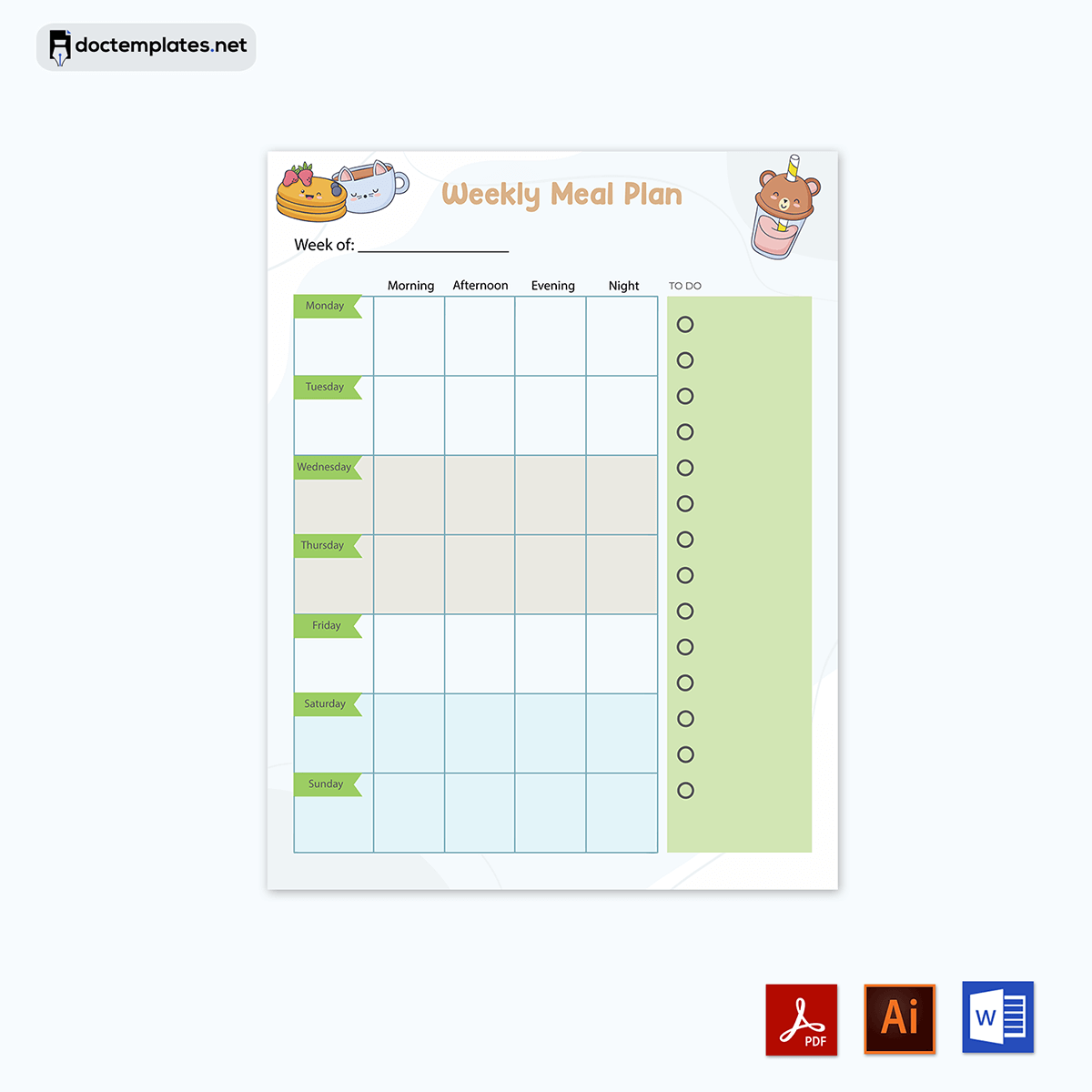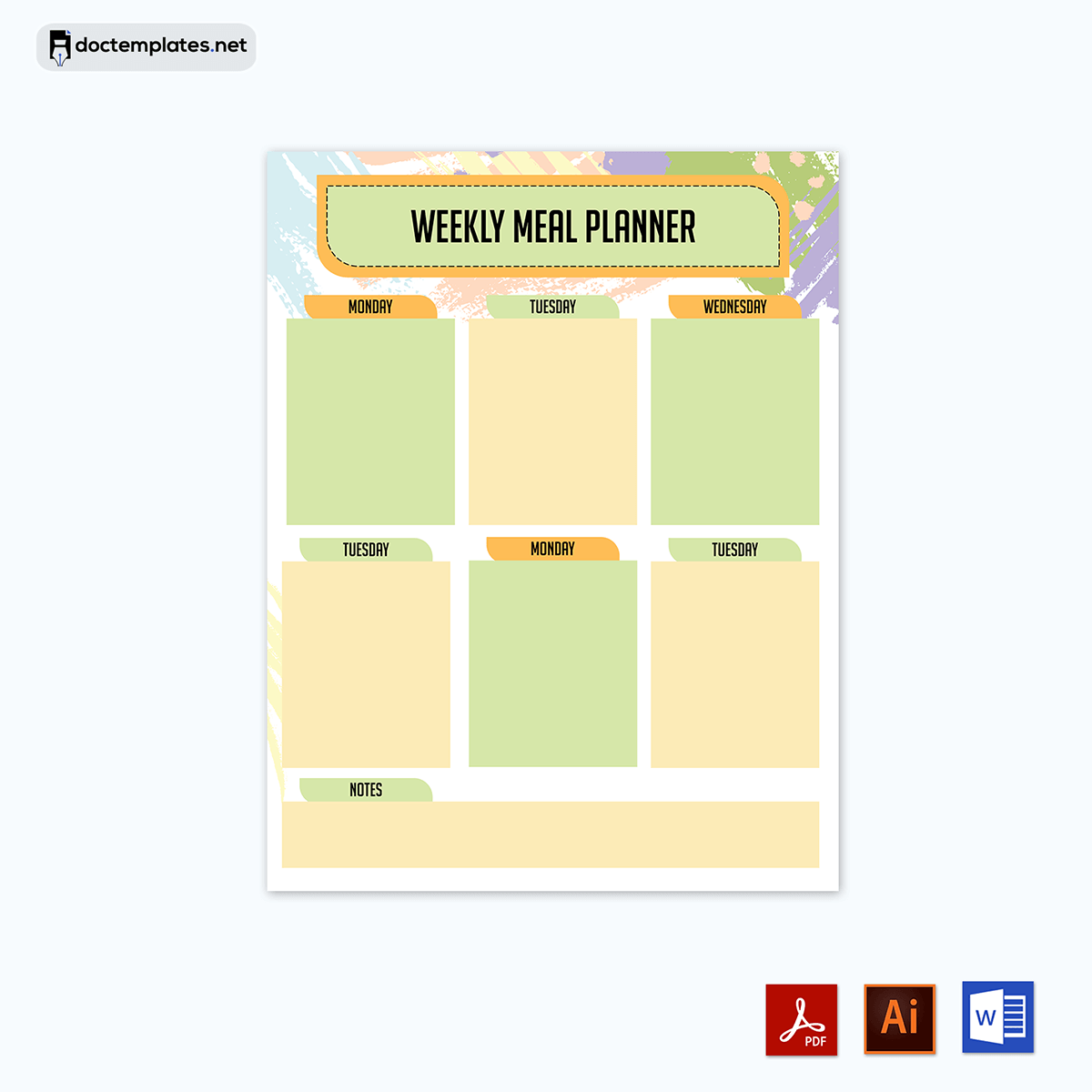You have probably thought about how exhausting it is to decide what to eat for each meal. If you have to follow a diet for fitness or health reasons, it may be even more difficult to decide what to take while avoiding the monotony of eating the same meal daily. Meal planning is one of the simplest ways of organizing your meals for a specified period of time; it can be daily, weekly, or even monthly. it could be efficiently manage by using a meal plan template.
Meal planning is deciding what meals you will have in advance according to your preparation time, schedule, and food preferences. While there are different meal plans, the weekly one is the most popular and convenient. They are made at the beginning of every week; as such, they can help you save time, especially if you have a busy week ahead. With a good weekly meal plan, you can decide on simple and fast meals and even meal prep for the week.
It can also give you more control over eating. You can select healthier meals. Since you have planned them in advance, you can always buy the items at the grocery store and have them available in the house when needed. This reduces the chances of you having to eat just what is available in the house. It also helps you reduce food waste. It helps you decide the amount of food you need to prepare for every meal, and you can also plan to use one ingredient multiple times to avoid wastage.
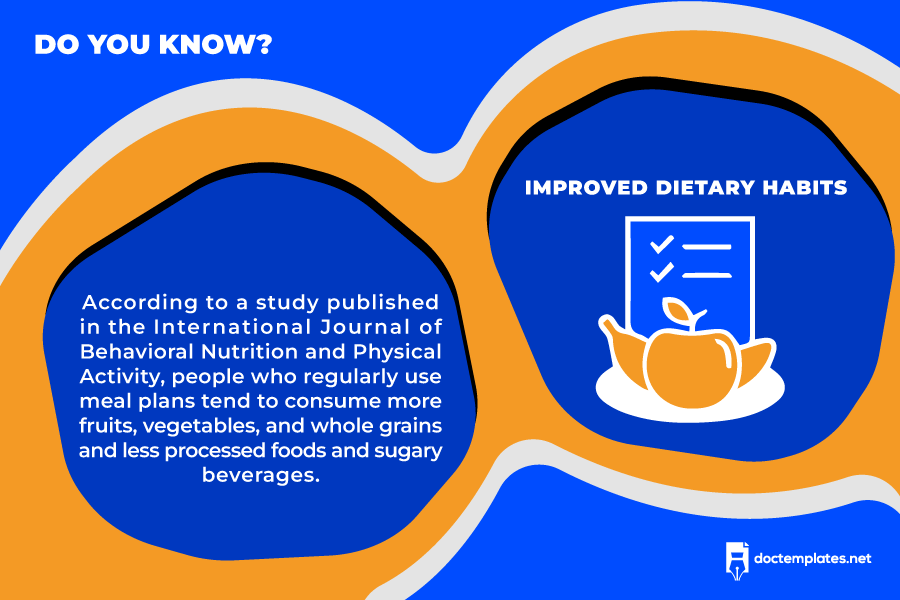
If you are thinking of making a meal plan, this article is the best place to start. It guides how meal plan templates are important and how to make them effective.
Free Templates
Meal Planning Made Easy: The Importance of Weekly Meal Plan Templates
Weekly meal plans offer a lot of benefits. First, they can help you save time deciding what to shop for and what to cook. With an effective plan, you can decide what you will cook every day of the week at the beginning of that week. Further, you will spend less time shopping for grocery items as you already know what you need.
Second, they can help you save money through proper budgeting. In addition to helping you budget your weekly grocery shopping in advance, you can avoid overspending on unnecessary items and ensure you use all your perishable foods before they spoil.
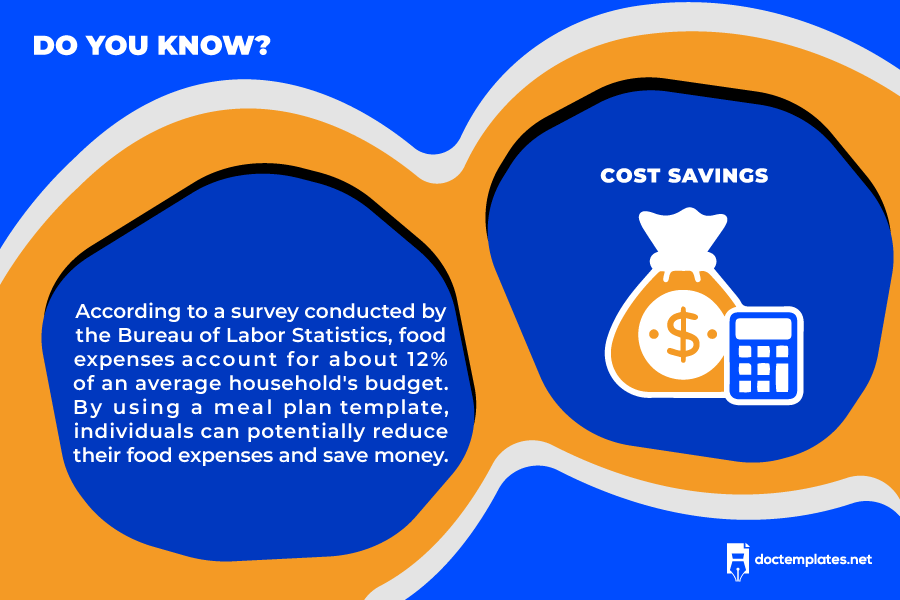
Finally, it can help you select healthier and easy-to-make meals. You can select and prepare various healthy food options to ensure they are available when you need to cook. Since you will be buying your groceries in advance, you can check the calorie count as you buy your ingredients instead of doing it during the week as you cook.
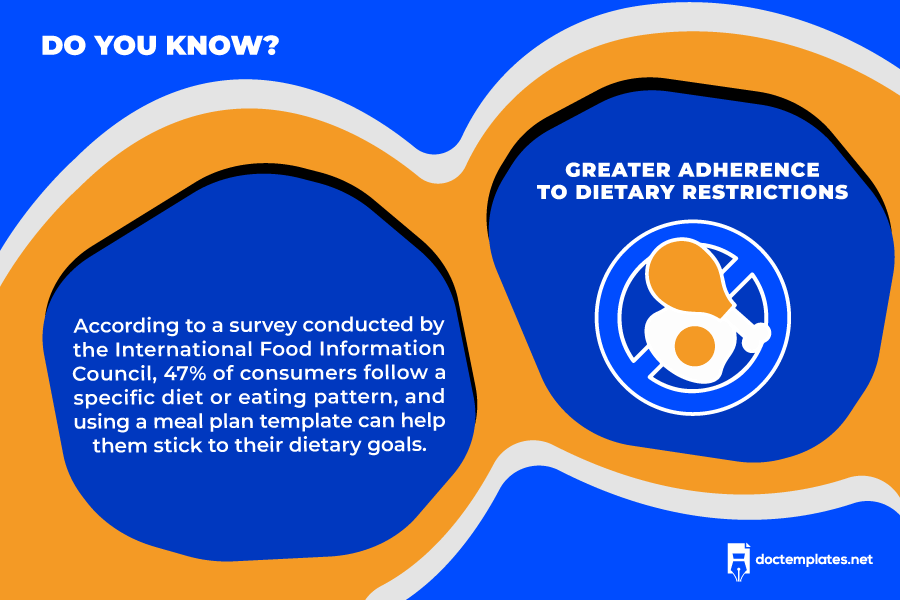
This article provides a detailed procedure for preparing your template for a meal plan on MS Word.
Making a Weekly Meal Planner Template in MS Word
Before you make your planner, you must understand that your meal plan should be flexible and convenient. You can make the meal-planning process fun by trying new recipes and experimenting with what you already know. You can also use it to explore healthier options. As you make your first template for a weekly meal plan, you can occasionally deviate if you are unsatisfied with your choices; it does not have to be followed strictly.
Here is how you can prepare your weekly meal plan on MS Word:
Step 1
Open a new document on MS Word. Type the title of your document, ‘weekly meal plan.’ You can use the font of your choice, but since it is supposed to be fun, it is advisable to avoid standard official fonts like Times New Roman. Once you write your title, you can increase the font size of your choice and center-align it by selecting the center-align option in the top menu.
Step 2
Select the insert option to insert a table of dimensions; eight rows and seven columns. Once your table is ready, you can increase the size of the first row by selecting the layout option and increasing the size of the last row by dragging it to the bottom of the page.
Pro tip: Make the template easy to read by using a clear and concise format. Use bullet points or numbering to make the list of meals and ingredients more scannable, and use a font size and style that is easy to read.
Step 3
Once you have prepared your table, indicate the meals you would like to eat daily in the first row, beginning with the second column. For example, you could take breakfast, lunch, dinner, and a snack in between. The last column should be for preparation.
Pro tip: Consider adding a grocery list section to the template to make meal planning easier and more efficient. This way, you can quickly jot down the ingredients you need to purchase for each meal and have a comprehensive shopping list ready to go.
Step 4
Indicate the days of the week in the first column beginning with Monday, Tuesday, and the subsequent days.
Pro tip: Consider adding notes or tips to the template to make it more helpful. For example, you could include suggestions for meal prep or storage, ingredient substitutions, or tips for making the meals more flavorful or satisfying.
Step 5
You can now customize your table to suit your needs. You can change the color of your columns, customize each tab and even add an image to make your weekly meal plan colorful. For example, if you would like to change the borders of your table, you can right-click and select the borders option and customize it to the borders you would like.
Pro tip: Meal planning might seem difficult if you include meals you do not enjoy. To make this process fun and healthy, incorporate your favorite meals in the template, select a theme for a day of the week, and list meals you enjoy.
Step 6
You can then save your document as a ‘Weekly Meal Plan Template’ and edit it whenever necessary.
If you find using MS Word challenging and time-consuming, you can customize free downloadable templates. These documents are also helpful as they can be edited to suit your needs.
In a Nutshell
Weekly meal plans should serve your needs; they should therefore be flexible to your needs. Before you make your plan, you should know why you’re making it. Is it for dietary or health needs? Once you have decided, you can prepare one comprehensive plan.
Weekly meal plans can make it more convenient for you to achieve your health goals; they allow you to prepare meals that suit your needs and can be adjusted to satisfy any changes you need to make.
